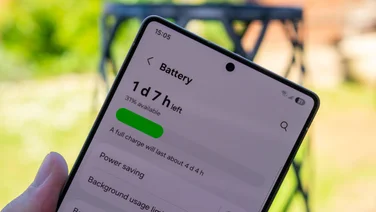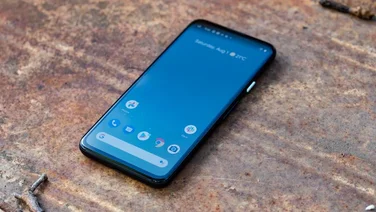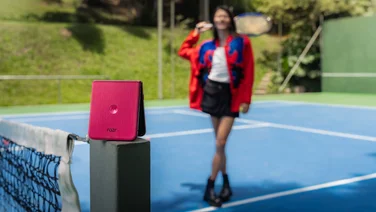To help us provide you with free impartial advice, we may earn a commission if you buy through links on our site. Learn more
- Microsoft Surface Duo 2 review: What you need to know
- Microsoft Surface Duo 2 review: Price and competition
- Microsoft Surface Duo 2 review: Design and key features
- Microsoft Surface Duo 2 review: Displays
- Microsoft Surface Duo 2 review: Software
- Microsoft Duo 2 review: Performance and battery life
- Microsoft Surface Duo 2 review: Cameras
- Microsoft Surface Duo 2 review: Verdict































- Significant performance uplift
- Beautifully constructed
- Cameras are much improved
- Very expensive
- Non-Microsoft apps can be buggy
- No dual SIM or microSD slots
While a bit of a novel concept, manufacturers are still in the planning stages of figuring out how to make (and sell) folding smartphones. With some phone makers deciding to incorporate flexible displays into their designs, others, like Microsoft, are following a far simpler route, instead merely placing two screens side by side, with a hinge separating the two.
Each design has its own set of benefits and drawbacks, and while theres no doubt that Samsungs bendy screens gain most of the attention whenever a new model launches, sometimes the simple path is the one best travelled.
READ NEXT: Best smartphones
And so, the dual-screened Surface Duo returns, although this time Microsoft has made a bit of an effort to address the (many) criticisms of the original. And while its still far from perfect, the Surface Duo 2 is finally a worthwhile addition to the folding phone arena all Microsoft needs to do now is reconsider how much its charging for one.
Microsoft Surface Duo 2 review: What you need to know
Microsofts much-maligned foldable flagship is back and plenty of stuff has changed this year, mostly for the better. The concept remains the same: you open it up like a book, and theres not much you can do with it while closed, although this year the Duo 2 has a pair of 8.3in screens on the inside (up from 8.1in), which now have a boosted refresh rate of 90Hz and support for HDR playback.































Internally, the Surface Duo 2 is powered by a much faster Snapdragon 888 chipset, with an extra 2GB of RAM (8GB) and an option to increase the internal storage up to 512GB. Perhaps the most obvious upgrade is the new triple-camera block on the rear, which now incorporates a 12MP main camera, 12MP 2x telephoto sensor and a 16MP ultrawide unit. The previous model had to make do with a solitary (and frankly rather shoddy) 11MP camera.
Microsoft Surface Duo 2 review: Price and competition
Alas, the Surface Duo 2 is still excruciatingly expensive. Admittedly, Microsofts foldable is £50 cheaper than the original was at launch, but the Surface Duo 2s comparatively microscopic saving means youve still got to pay at least £1,349 if you go SIM-free.
That particular figure is for the 128GB version, with 256GB costing £1,429 and the 512GB model going for £1,589. EE is the only UK mobile network offering the Surface Duo 2 on contract, with prices starting at £73 a month with an upfront cost of £153 and this only comes with 4GB of monthly data. An unlimited data contract costs an eye-watering £90 a month.
For the amount of money you might spend on the Surface Duo 2, you could buy an iPhone 13 Pro Max instead and still have £300 left over. Then again, Apples flagship doesnt fold at least without breaking it and thats what were here for in the first place, right?































Of course, its not like Microsoft is alone in charging this much. Samsungs Galaxy Z Fold 3 is even pricier than the Duo 2, starting at a lofty £1,599. On the other hand, Samsung does also offer the Galaxy Z Flip 3 as a second option, with its flip-to-open clamshell design coming in at an enticing £999.
Theres also the ageing Moto Razr (2019), which seems to have been abandoned by Motorola in the subsequent years since its release. Despite having a similar design as the Z Flip 3, and being two years older, you have to pay an extra £200 (£1,199).
Microsoft Surface Duo 2 review: Design and key features
Arguably, the Duo 2s biggest list of upgrades can be found in the design. And while it still functions exactly the same as the original with a pair of screens separated by a 360-degree reversible hinge theres a lot to like in terms of both looks and functionality. Its pretty obvious that Microsoft has addressed previous (negative) feedback, too.
To start with, the inner glass is now surrounded by thin plastic, which means that the Duo 2 is much softer to close, and both screens are also more durable, protected by a layer of Gorilla Glass Victus.
These arent flexible panels, either, so they should survive a lot longer against the stresses of everyday life, unlike Samsungs flimsy Foldable Dynamic AMOLED 2X displays. However, unlike the Z Fold 3, the Surface Duo 2 doesnt have an IP rating, which means its pretty much useless against the elements.































The Duo 2s hinge feels a bit sturdier than the previous version, too. Microsoft hasnt explicitly discussed any changes to the phones hinge, but in my testing it does seem to hold the second screen more securely in place when adjusted at dramatic angles.
Another big change is the addition of that chunky camera block on the phones rear. Now incorporating a trio of cameras which Ill discuss later in this review the Duo 2s camera housing protrudes about 3.5mm from the back glass panel. Its certainly not the nicest thing to look at, but thankfully it doesnt get in the way when it comes to functionality. The second screen can still be rotated all the way around, and theres not much flex if you press the screen against the gap, either.
READ NEXT: Best phone camera
The inner screens now curve slightly into the phones hinge, which not only looks swish but also serves a practical purpose. When closed and charging, the small visible strip can be used to display the charging progress as a simple green bar, and you can also display the time whenever you click the power button on the opposite edge.































Of course, the Duo 2 still suffers from the originals shortcomings when it comes to pocketability (or lack thereof). At 93mm wide and 145mm tall, you can just about squeeze the Surface Duo 2 into an average-sized mans jeans pocket, but theres no hope of getting it in a womans pocket, which are generally much smaller. The 9.9mm thickness when folded doesnt do it any favours, either.
Its also not the easiest thing to hold. The Duo 2s width means its only really suitable for large hands, and its especially cumbersome when using it to make calls and placing it against your ear. At 250g, the Duo 2 puts a lot of pressure on your thumb when held like this I couldnt bear more than five minutes before switching on the speaker and placing the phone on a table instead.
Another damp note is the lack of a dual SIM card tray. We might not be doing much international travel these days, but a phone as pricey as this and especially one catering for professional types ought to have space for a second nano-SIM. The option to expand the internal storage via microSD would have also been nice, but one thing I do like is that you can now buy the Surface Duo 2 in a new Obsidian Black, alongside the returning Glacier White.































The Surface Duo 2 supports Microsofts new Surface Slim Pen 2 stylus, although I wasnt sent one as part of this review. An optional £119 extra, the Slim Pen 2 supports the usual array of drawing and multitasking functions, and you can also buy a Pen Cover case (£60), which allows you to magnetically attach the stylus and charge it, too.
Microsoft Surface Duo 2 review: Displays
Both of the Surface Duo 2s inner AMOLED PixelSense Fusion displays have slightly increased in size to 5.8in (up from 5.6in) and they now support a boosted maximum frame rate of 90Hz which, weirdly, cant be dialled down in the phones settings. What this means is that navigating the Surface Duos UI not only feels more responsive, but it opens the door for high-frame-rate gaming in supported titles as well. More on that in a bit.
The good news keeps coming: both of the Surface Duo 2s screens performed well in the colour accuracy stakes during our display testing, reaching 95% sRGB coverage in the phones Natural mode, with a total volume of 98%. An average Delta E of 2.22 is (almost) as good as can be, with only a few discrepancies in red and dark blue tones.































The Duo 2s secondary Vivid colour profile tweaks the saturation of colours, but not to a distracting degree. Whichever mode you choose, however, youll still be getting effectively perfect contrast of Infinity:1, as well as a high peak brightness of 700cd/m², with a measured 772cd/m² when displaying HDR content.
On that note, its worth mentioning that the Duo 2 is rather awkward to use as a media consumption device. The phones unusual 3:2 aspect ratio doesnt play nicely with most films and TV shows, so black bars above and below the screen are quite common. Stretch the app across both displays and you have another problem: a distracting crease in the middle.
Microsoft Surface Duo 2 review: Software
Microsoft has given the phones software a shot in the arm for 2022. The big thing this year is dedicated Xbox Game Pass cloud gaming support, and youre now able to use one of the phones displays as a makeshift touchscreen controller in certain games. Theres no way of knowing which games support this feature, however: a handy list in the Game Pass app would be useful here.
In more conventional use, the Surface Duo 2 functions in the same way as the previous model. As before, you can choose to run two apps side by side (even grouping them together), drag and drop between screens or take notes and sketch across both displays. The gesture navigation controls are the same, too: swipe up from the bottom and you can move the app between screens, or simply place it on the hinge to display across both.































Generally speaking, this works rather well, especially if youre planning on mostly using Microsofts suite of applications. Dual-wielding Edge and OneNote was a breeze, typing notes as I was researching for this review. However, switch to a non-Microsoft app and things dont run quite as smoothly.
This isnt necessarily Microsofts fault, but Android still has a long way to go when it comes to supporting multiple screens. Every application I tested from Chrome and Geekbench 5 to Call of Duty: Mobile launched, but its just that I had a couple of crashes during this time and none of them worked particularly well when displayed across both screens.
For instance, Microsoft Outlook can display your list of emails on the left screen, with the content of the selected email showing up on the right. Gmail, on the other hand, tries to replicate this, but with large chunks of text lost in the crease.
Microsoft Duo 2 review: Performance and battery life
Internally, the Surface Duo 2 now uses the Qualcomm Snapdragon 888 for processing duties, which replaces the ageing Snapdragon 855 of the original. This updated SoC has an embedded 5G modem, which means the Surface Duo can finally connect to the 5G network, and it also has an extra 2GB of RAM (8GB) with three storage choices: 128GB, 256GB and 512GB.
READ NEXT: Best phone battery life
As for performance, its no surprise that the Surface Duo 2 barely differs from the countless other Snapdragon 888 phones Ive reviewed. In the Geekbench 5 single-core and multicore tests, the Duo 2 is as rapid as they come, with only the Apple A15 Bionic (found inside the iPhone 13) coming out on top.

The Duo 2 is a great gaming phone, too. With its pair of 90Hz screens, it pushed the GFXBench Manhattan 3 onscreen benchmark to its limits, reaching a flawless 90fps. An off-screen score of 157fps proves that the Duo 2 is also capable of pushing frames even higher, so perhaps theres room in Microsofts budget for a pair of 120Hz panels in next years model?

Battery life has also been improved. Where the original struggled to reach 18 hours in our video rundown test, the Surface Duo 2 achieved 20hrs 34mins on a single charge when displayed on one screen. Stretch the video across both displays and youre looking at 13hrs 36mins, which isnt too bad.

Microsoft Surface Duo 2 review: Cameras
Camera-wise, the Surface Duos pitiful 11MP snapper has been replaced with a boosted triple-camera array, consisting of a main 12MP (f/1.7) camera, a 12MP (f/2.4) 2x telephoto unit and a 16MP (f/2.2) ultrawide sensor with a 110-degree field of view. Microsoft has finally added a selfie camera, too, although this is a somewhat simple 12MP (f/2.0) affair.
I no longer have the original model for comparison, but the Duo 2 clearly wins in the versatility stakes. Even so, the previous Duos single camera was so abysmal with the vast majority of photographs looking washed out with unnatural-looking colours that Microsoft really didnt need to do much to have it beat.

Yet the Surface Duo 2s trio of cameras are a significant improvement. Sure, it cant quite match the Pixel 6 or iPhone 13 Pro Max when it comes to sheer detail capture, but what you get is a phone thats capable of taking decent pictures in all manner of environments and conditions which certainly couldnt be said about last years model.
Capturing a landscape photo in good light, the Duo 2s main and telephoto cameras both do a good job at bringing out the best of what youre shooting, with only the ultrawide unit falling behind with some mushy results. The phones HDR algorithm and autofocus both worked well, too, and pictures were captured near instantly.

Low-light pictures are much improved as well. Again, its no match for the Pixel 6 or iPhone 13, but theres plenty of detail to be found in dark environments, with only a few traces of visual noise throughout. Video is also very good, capturing 60fps footage at 4K resolution, fully stabilised.
Microsoft Surface Duo 2 review: Verdict
Its quite obvious that the Surface Duo 2 is an enticing upgrade. The sort of phone I was hoping to use when the original model first launched in 2020, Microsoft finally has a foldable worth buying on its second attempt even if it is stonkingly expensive.
For most phone buyers, a humdrum single-screen handset is the better purchase for a while to come, but for anyone with a deep bank balance looking to venture into fresh territory, the Surface Duo 2 isnt a bad choice at all.
| Microsoft Surface Duo 2 specifications | |
|---|---|
| Processor | Octa-core Qualcomm Snapdragon 888 (1×2.84GHz, 3×2.42GHz, 4×1.8GHz) |
| RAM | 8GB |
| Screen size | 8.3in (2x 5.8in) |
| Screen resolution | 2,688 x 1,892 (2×1,892 x 1,344) |
| Pixel density | 401ppi |
| Screen type | AMOLED |
| Screen refresh rate | 90Hz |
| Front camera | 12MP (f/2) |
| Rear camera | 12MP (f/1.7), 12MP (f/2.4) 2x telephoto, 16MP (f/2.2) ultrawide |
| Flash | Dual LED |
| Dust and water resistance | No |
| 3.5mm headphone jack | No |
| Wireless charging | No |
| USB connection type | USB-C |
| Storage options | 128GB; 256GB; 512GB |
| Memory card slot (supplied) | No |
| Wi-Fi | Wi-Fi 6 |
| Bluetooth | 5.1 |
| NFC | Yes |
| Cellular data | 5G, 4G |
| Dual SIM | No |
| Dimensions (WDH) | 185 x 145 x 5.5mm (unfolded); 145 x 92 x 11mm (folded) |
| Weight | 284g |
| Operating system | Android 11 |
| Battery size | 4,449mAh |





